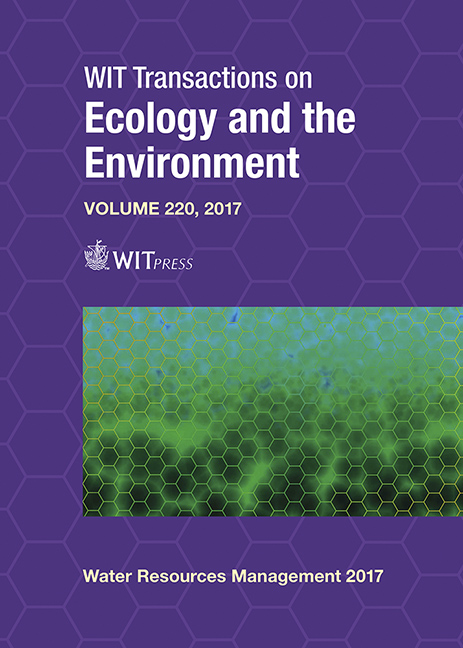THE PERFORMANCE ANALYSIS OF THE URBAN FLOOD PREVENTION PROJECT IN KOREA
Price
Free (open access)
Transaction
Volume
220
Pages
8
Page Range
185 - 192
Published
2017
Size
309 kb
Paper DOI
10.2495/WRM170181
Copyright
WIT Press
Author(s)
JUNGNAM PARK, JEONGMIN KWON, SANGWON HAN, BYOUNGMANN PARK, JUNGGYU HAN, JUNGHYUN HWANG, SEOKHYUN CHUNG
Abstract
The frequency of intensive rainfall keeps increasing due to climate change. Some areas in downtown Seoul were flooded by localized heavy rainfall (2010 and 2011). The Ministry of Environment of the Republic of Korea prepared the “Comprehensive Plan on Sewerage Maintenance against Urban Flooding” in 2012 in order to eliminate flooding by improving sewer systems in selected 6 areas in consideration of regional representation. As a model, 232.7 billion KRW (210 million USD) was invested at the 6 selected sites for upgrading the drainage infrastructures. They expanded sewer infrastructures such as storm water pipelines, detention facilities and pumping stations. We analysed the achievements of the urban flood prevention projects. The performance of exemplary projects includes: 1) eliminating flooding in 30-year frequency rainfalls; 2) simulating a dual drainage system in Korea for the first time; 3) developing a rainfall runoff model suitable for Korean situations; 4) applying sewage drainage tunnels; 5) applying Real Time Control (RTC) for sewage systems. As a result of the fundamental solution to the problem of repetitive flooding, 54,299 households in 15.1 km2 became safe from flooding by improving drainage facilities in various ways. Also, the quality of life of residents got better by creating a comfortable and safe environment. Based on the performance of these exemplary projects, Korean government will select 107 flood prevention areas by 2025 and promote flooding prevention projects.
Keywords
storm water, climate change, urban flood, sewer system, rainfall, flood prevention, drainage facility, SWMM





